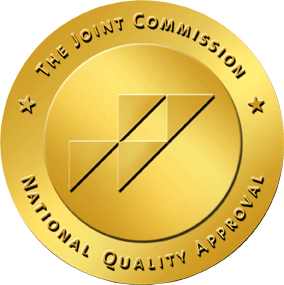In light of the recent controversy over the National Institute of Health’s (NIH) $100 million dollar research study funded by the alcohol industry, we think it’s a good time to talk about the science surrounding moderate drinking.
Quick Summary – In this article, we will:
- Go over the current guidelines on moderate drinking
- Discuss the Popular research surrounding moderate drinking
- Talk about conflicts of interest and why they’re so important
We can all agree that drinking too much is bad for our health. However, when it comes to defining just how much alcohol, if any, is safe, opinions vary widely. At this time, the majority of Americans subscribe to the belief that, in general, drinking is okay, as long as it’s done in moderation.
But…what counts as moderate drinking? Let’s define it.
Moderate Drinking
These are the current agreed upon guidelines for moderate drinking:
- 1 drink a day for women and 2 drinks a day for men
- Men and women should not consume more than 3-4 drinks per episode (i.e. nights out), so no binge drinking.
- Women should not have more than 9 drinks per week, and men should not go over 14 drinks per week
- Following these guidelines, people shouldn’t be getting very drunk at any point
Trusted organizations like the National Institute on Alcohol Abuse and Alcoholism (the NIAAA), as well as the CDC, use the “standard drink” unit when they define moderate drinking. That means a standard helping of beer, wine, or spirits when poured appropriately, should all equal roughly the same amount of ethanol alcohol entering our systems.
1 Standard Drink=
- 12 fluid ounces (fl oz) of the average American beer with a 5% alcohol content
- 8-9 fl oz of Malt Liquor which has about 7% alcohol content
- 5 fl oz of wine, which is usually around 12% alcohol
- 1.5 fl oz of distilled spirits (AKA hard liquor) which are usually around 40% alcohol
Some people have 0 safe limits with alcohol. Those with a history of certain diseases, such as breast cancer or liver disease, should not drink at all. Those recovering from addiction should refrain from drinking also.
Alcohol Research
“So, are these guidelines backed by credible science? If I stick to the limits, I won’t suffer from diseases like cirrhosis of the liver, heart disease, or alcohol-related cancers?”
Even though these guidelines are backed by trusted government organizations, surprisingly, there have been NO randomized trials regarding their safety.
So no, science does not back up these guidelines. There is no guarantee you won’t suffer from these alcohol-related diseases, even if you stick to the recommended limits.
Recent Popular Studies
Unfortunately, a lot of the science investigating safe levels of drinking is conflicting.
Some sources say that light alcohol consumption, 1 drink a day or less, is actually beneficial. Even so, the CDC and other agencies warn that those benefits aren’t worth the risk of starting to drink. Additionally, some sources say that light drinking,1-2 drinks per week, during pregnancy is fine, and others warn that even tiny amounts of alcohol pose serious harm to a growing baby.
The research behind the claims that alcohol is beneficial for cardiovascular health has now been effectively cut down to size for having major design flaws. The original study found that light drinkers were less likely to die from heart disease than those that abstain. However, the original study did not differentiate those people who don’t drink and never did, from those people who weren’t drinking at the time because of health problems, or previous alcoholism. When scientists sorted out the true non-drinkers from the former-drinkers, they found that the health benefits of alcohol disappeared.
Unfortunately, that updated information came too late. Already, nearly 20% of Americans now believe that light drinking is health-protective even though it’s not.
Conflicts of Interest:
All of the mixed messages out there can get really confusing! So it’s worth checking out who exactly is funding the science that we’re using to make decisions that affect our health.
One of the best ways to know for sure how much alcohol consumption is truly safe, is to perform a longitudinal, randomized & controlled study. That means, taking a large group of people and asking them to either completely refrain from drinking, or to drink moderately and then checking in on their health afterward.
Just until last month, such a study was on the way. The NIH was recruiting participants to study the health effects of moderate drinking longterm. However, the study came to a halt when the NIH director announced there was a conflict of interest. About 2/3 of the $100 million dollar budget came from alcohol producers.
When industries get involved with relevant health research trials, the results are 4 to 8 times more likely to work out in their favor. Scientific approval is great marketing. That’s why alcohol producers are so interested in tipping the scale of a study like this one.
It’s important to know what risks we’re taking when we decide to consume anything, including alcoholic beverages. Unfortunately though, because of major conflicts of interest in the world of scientific research, we may not get any clear answers anytime soon.
GET HELP TODAY THROUGH BREATHE’S ALCOHOL REHAB
If you or someone you love is struggling with alcohol abuse and dependence, help is available. Call our alcohol rehab in Los Angeles today to learn more about our treatment process. Start living the life you deserve now!














